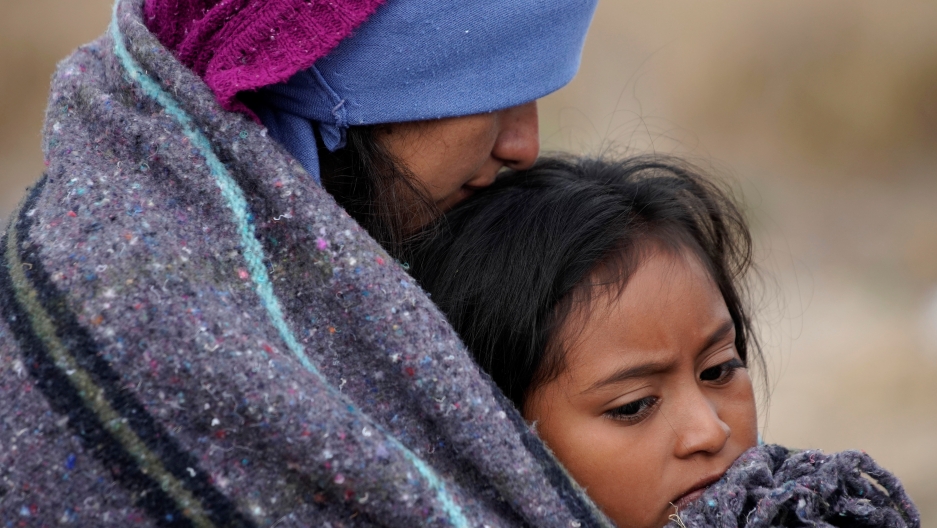
Migrant Yoselin Dias, 9, from Honduras, is held by her mother as they wait for transportation during their journey toward the United States, in Matehuala, Mexico. Photo: Alexandre Meneghini/Reuters
The influx of refugee seekers from Central American nations at our southern border has garnered widespread attention and caused national tension (made evident by last weekend’s firing of former-Secretary of Homeland Security, Kirstjen Nielsen for her relaxing of policies that separated children from parents). This year, nearly 1 million could arrive at the U.S.-Mexico border and a fact that gets lost in the politics is that climate change is a contributing factor that’s making people flee their homes. Sure, dangerous gangs and widespread violence are the primary cause, but as Lauren Markham explained in The Guardian, “the northern triangle of Central America – a region comprising Guatemala, El Salvador and Honduras, and the largest sources of asylum seekers crossing our border in recent years – is deeply affected by environmental degradation and the impacts of a changing global climate.”
More stats to paint the picture:
- The average temperature in Central America has increased by 0.5C since 1950; it is projected to rise another 1-2 degrees before 2050. This has a dramatic impact on weather patterns, on rainfall, on soil quality, on crops’ susceptibility to disease, and thus on farmers and local economies. Meanwhile, incidences of storms, floods and droughts on are the rise in the region.
- In coming years, according to USAID, countries in the northern triangle will see decreased rainfall and prolonged drought, writ large:
- In Honduras, rainfall will be sparse in areas where it is needed, yet in other areas, floods will increase by 60%.
- In Guatemala, the arid regions will creep further and further into current agricultural areas, leaving farmers out to dry.
- And El Salvador is projected to lose 10-28% of its coastline before the end of the century.
John Sutter, senior investigative reporter for CNN, who went to rural Honduras to report on climate change and immigration, put these stats into context by explaining that “In particular, spring rains, which are incredibly important for corn crops — a staple in this region — just haven’t been coming. They’re almost completely missing when you look at the average rainfall by the month. It’s partly that rains have decreased; it’s partly that they’ve shifted and are no longer falling in the seasons when they have been so useful to farmers in the past. But it’s been very troubling and created a lot of hardship.”
Why This Matters: President Trump (who just yesterday had his policy of returning asylum seekers to Mexico halted by a federal judge), refuses to acknowledge climate change and the national security threat that it poses both at our borders and around the world. Climate change will destabilize entire regions around the world and the influx of refugees we’re currently witnessing may be a small preview of mass migrations to come. The most heartbreaking part of this whole ordeal is that Central American countries have hardly contributed to global warming yet these nations will have to suffer the consequence of the United States’ addiction to fossil fuels.
April 9, 2019 » climate change, climate regufees, refugee crisis, refugees, southern border


